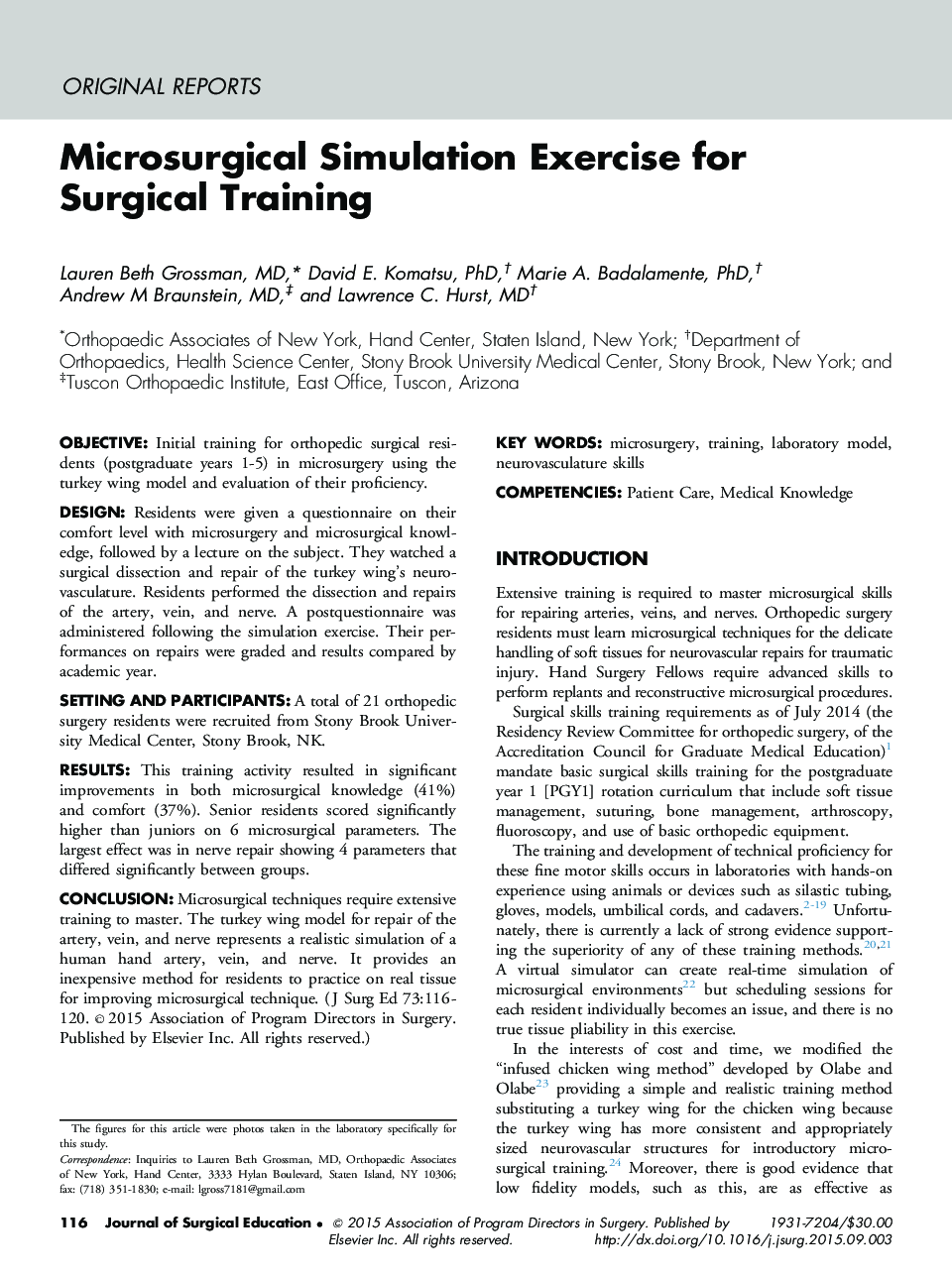| Article ID | Journal | Published Year | Pages | File Type |
|---|---|---|---|---|
| 4297433 | Journal of Surgical Education | 2016 | 5 Pages |
ObjectiveInitial training for orthopedic surgical residents (postgraduate years 1-5) in microsurgery using the turkey wing model and evaluation of their proficiency.DesignResidents were given a questionnaire on their comfort level with microsurgery and microsurgical knowledge, followed by a lecture on the subject. They watched a surgical dissection and repair of the turkey wing’s neurovasculature. Residents performed the dissection and repairs of the artery, vein, and nerve. A postquestionnaire was administered following the simulation exercise. Their performances on repairs were graded and results compared by academic year.Setting and ParticipantsA total of 21 orthopedic surgery residents were recruited from Stony Brook University Medical Center, Stony Brook, NK.ResultsThis training activity resulted in significant improvements in both microsurgical knowledge (41%) and comfort (37%). Senior residents scored significantly higher than juniors on 6 microsurgical parameters. The largest effect was in nerve repair showing 4 parameters that differed significantly between groups.ConclusionMicrosurgical techniques require extensive training to master. The turkey wing model for repair of the artery, vein, and nerve represents a realistic simulation of a human hand artery, vein, and nerve. It provides an inexpensive method for residents to practice on real tissue for improving microsurgical technique.
